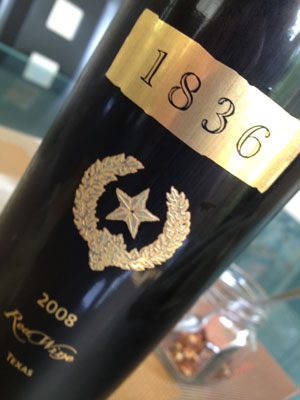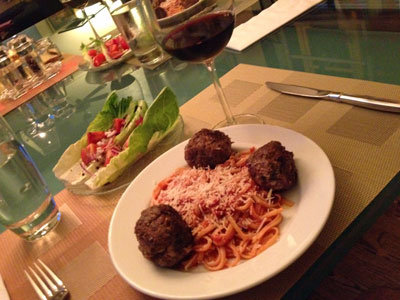Palle del Cacciatore – A Fitting Pairing for an Historic Texas Wine (Llano Estacado 1836)
This story starts with a Texas wine with an interesting and historical name – 1836. It’s a date of significance in Texas.
On the 20th of April, 1836, in a part of northern Mexico known as Tejas, a group of settlers won their battle for independence at The Battle of San Jacinto just a Texas stones throw from what is now downtown Houston, Texas. It was this decisive battle that lead to the formation of the independent Republic of Texas. As I’ve mentioned previously on this blog, wine appears to have factored into this famous battle.
On the misty spring day of April 17, 1836, rebel troops stood ready on the tan sandy shores of Galveston, Generalissimo Santa Anna and his forces arrived proudly in New Washington flush with their previous victories. By early afternoon with Sam Houston’s forces only half a mile away, Santa Anna lay in his tent, well imbibed, taking a siesta with his “Yellow Rose” and his troops similarly relaxing in the surrounding field. The battle was over in what was reported to be less than a half hour with Santa Anna fleeing out of his tent half-dressed. What the Texans found alongside Santa Anna’s tent was a case of empty Champagne bottles.
The wine at hand today was, in fact, quite worthy: 1836 Battle of San Jacinto Red Table Wine (2008) made by Llano Estacado Winery. It was a hearty, fruit-driven wine, bold yet elegant, with the structure of Cabernet Sauvignon, silky opaque lusciousness of Syrah, crispness of Sangiovese, aromas of dark fruits of Malbec and an infusion of the vanilla extract from new French Oak. The grapes were primarily from a notable west Texas vineyard called Mont Sec that lays on the calcium-rich soils of the high Chihuahuan desert. This is a locale where hot days and cool nights prevail. They impart to the grapes (and wines) their own style of what the winemakers at Llano Estacado Winery call “Chihuahuan love“. This is one Texas wine worthy of being called a Super Premium.
After the first taste of I knew that I needed something special to commemorate both the Battle and this historic bottle of Texas wine, but what? I scratched my head, then searched my frig, freezer and pantry. Then, I knew what I had to do. I had to create a meal, as a painter attacks a canvass (or as a winemaker creates of wine like 1836), to define something bold, accented and a compliment to this wine. I first located a series of ground meats (1/2 Texas hunted and prepared venison, 1/4 pork and 1/4 turkey) and proceeded to “blend them” in a large mixing bowl. To the blend, I added a bit of texturing with panko bread crumbs. Next, I added consistency with an egg helped bind the meats as one. Into this concoction went finely chopped parsley, onions, garlic and mushrooms. The blending of these chopped vegetables was followed by what I believe was the defining moment in creating what I then realized was going to be turned into a gourmet take on classic meatballs. The definition, as is often the case in modern cuisine, came in the spice blend that included: major portions of basil and oregano followed by accents of crushed red pepper, thyme, fennel, black pepper and anise. I kneaded, divided and rolled the meatballs: 12 in all at about two inches diameter.
As I cooked the meatballs on the stove top, I sipped and savored the wine while also took in the steamy, meaty and herbal aromas coming from the pan. Then, I paused a moment as I didn’t have a name for this preparation. But then, it came to me – Palle del Cacciatore! With this name, a devilish smile came to my face.
Celebrate Texas independence this year with a taste of 1836!



Spaghetti and meatballs — perfect wine food always.